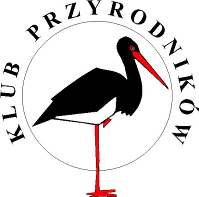Restoring degraded peatlands in Słowiński National Park Poland (Peat Restore)

Situation and background
Draining and afforestation from the 19th and 20th Century have led to the degradation of three former raised bogs (approx. 1350 ha in total) situated in the Słowiński National Park, Poland. This area is currently covered by damaged bog forest, with small fragments of the typical mire vegetation. Furthermore, draining ditches, which are remnants of 19th Century draining activities, are still active, promoting water outflow into the Baltic Sea. The decomposition of dried peat releases CO2 into the atmosphere, along with dissolved carbon, nitrogen and phosphorus that flow into the Łebsko coastal lagoon, which is directly connected to the Baltic Sea. Excavation of peat in the southeast areas of the Park was also undertaken in the past. Currently, the artificial water basins created by former peat mining (approx. 30 ha) that are part of the National Park are in need of restoration in order to foster peat-forming vegetation and improve ecosystem services.
Project activities and effects
Project Goal:
- Demonstrative restoration of peatlands in the Słowiński National Park by stopping water outflow from artificial ditches, reducing peat decomposition (which consequently reduces CO2 emissions, and dissolved carbon, nitrogen and phosphorus outflow through water), and initiating peat-forming vegetation in post-mining areas.
Objectives:
- To improve the water conditions of 1350 ha of peatland by stopping water outflow, and restoring or improving mire or bog forests habitats, thereby conserving approx. 37 mln Mg CO2 by preventing peatland degradation
- To stop or reduce the outflow of dissolved carbon, nitrogen and phosphorus through water from degraded peatlands
- To maintain and restore 60 ha of the most valuable open peat-forming vegetation
- To initiate peat forming vegetation on approx. 30 ha of artificial peat-mining water basins
- To improve public awareness on the ecological services of peatlands and to exchange knowledge with southern Baltic countries on mire habitat conservation and the restoration of associated ecosystem services
- To contribute to the coherent message from all southern-Baltic states (DE, PL, LT, LV, EE)
- To put the peatlands ecological services (carbon storage, water retention, preventing water pollution and eutrophication, biodiversity support) on the political agenda in DE, PL, LT, LV, EE
- To express and accent the coherence of these services, with special emphasis on the co-relation between biodiversity and other services
Activities:
- Peatbog restoration measures (e.g. blocking ditches, removal of trees
- Monitoring and assessment of results
- Testing innovative methods for the initiation of peat forming vegetation after peat mining
- Compiling recommendations for experts and stakeholders on mire management “with practical demonstration”
- Assessing socioeconomic benefits
- Communicating with relevant stakeholders through reports, publications and meetings
- Improving collaboration and knowledge exchange between Germany, Poland, Latvia, Lithuania, and Estonia
- Policy lobbying through preparation of an “After-project plan”
Beneficiary
Klub Przyrodników (Naturalists’ Club Poland)
Partners
The project is a part of a bigger international LIFE project implemented in all Southern Baltic regions: DE, PL, LT, LV and EE by 9 partners. The main partners of the project are:
- NABU (Germany) – coordinator of international cooperation;
- Lithuanian Fund for Nature, University of Tallinn, University of Latvia, Riga – Other countries experience providers
- Slowinski National Park – project landowner
Project region
Poland, Pomorskie Region
Project duration
2017-01-01 – 2021-06-30
Budget
total project budget: €1,407,565
funding BaltCF: € 318,227
